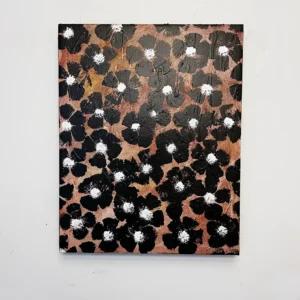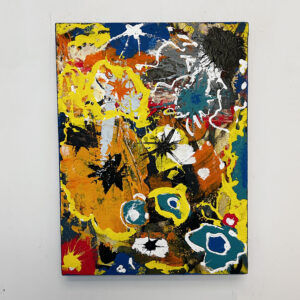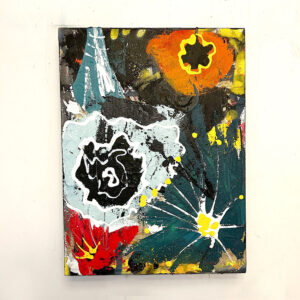Public art plays a significant role in shaping the identity and character of urban spaces, and Pittsburgh is no exception. The city’s public art initiatives have transformed its streets, parks, and public buildings, creating vibrant, engaging environments that reflect the community’s values and history. In this article, we explore the impact of public art in Pittsburgh, notable projects and artists, and the ongoing efforts to integrate art into the city’s urban fabric.
The Importance of Public Art
Public art serves as a powerful tool for community engagement, cultural expression, and urban revitalization. It enhances the aesthetic appeal of public spaces, making them more inviting and enjoyable for residents and visitors alike. Public art can also provoke thought, inspire dialogue, and reflect the diverse voices and stories of a community.
In Pittsburgh, public art initiatives have been instrumental in celebrating the city’s rich history, fostering community pride, and promoting social cohesion. These projects often involve collaboration between artists, local governments, community organizations, and residents, ensuring that the resulting artworks are meaningful and relevant to the community.
Notable Public Art Projects in Pittsburgh
The Pittsburgh Murals Project
One of the most prominent public art initiatives in Pittsburgh is the Pittsburgh Murals Project, which aims to beautify the city through large-scale mural installations. This project has resulted in a series of stunning murals that celebrate Pittsburgh’s history, culture, and people.
One notable mural is the “Rivers of Steel” mural by artist Edie Tsong, located in the South Side neighborhood. This mural pays homage to Pittsburgh’s industrial heritage, depicting steelworkers and iconic scenes from the city’s steel mills. The vibrant colors and dynamic composition of the mural make it a striking addition to the urban landscape.
The Andy Warhol Bridge Project
The Andy Warhol Bridge, one of Pittsburgh’s iconic bridges, has become a canvas for public art through initiatives like the “To Pittsburgh With Love” project. This project, organized by the Office of Public Art and the Pittsburgh Downtown Partnership, invited artists to create temporary installations on the bridge’s pedestrian walkways.
One memorable installation was the “Energy Flow” project by Andrea Polli, which used LED lights to visualize real-time wind speed and direction data. This interactive light installation transformed the bridge into a dynamic and ever-changing artwork, engaging pedestrians and creating a sense of wonder and connection with the natural environment.
Market Square Public Art Program
Market Square, a historic public space in downtown Pittsburgh, has been revitalized through the Market Square Public Art Program. This initiative, led by the Pittsburgh Downtown Partnership, commissions temporary public art installations that bring vibrancy and creativity to the square.
One of the standout projects in Market Square was “Congregation” by UK-based artist KMA. This interactive installation featured a series of light and sound sculptures that responded to the movement of people in the square. The installation encouraged social interaction and play, transforming the space into a lively and engaging environment.
Prominent Public Artists in Pittsburgh
James Simon
James Simon is a Pittsburgh-based artist known for his large-scale ceramic sculptures and mosaic installations. Simon’s work can be seen in various public spaces throughout the city, including the “Liberty Avenue Musicians” mural and the “Welcome to Uptown” mural.
Simon’s sculptures often celebrate local culture and history, using vibrant colors and intricate details to capture the essence of Pittsburgh’s neighborhoods. His work not only beautifies public spaces but also fosters a sense of community pride and identity.
Barb Feige
Barb Feige is a multidisciplinary artist whose public art projects often incorporate elements of nature and the environment. Feige’s “Watermark” installation, located along the Allegheny River, uses laser-cut metal panels to depict the changing water levels of the river over time.
Feige’s work highlights the connection between urban spaces and the natural environment, encouraging viewers to reflect on the relationship between human activity and nature. Her installations are both visually striking and thought-provoking, adding depth and meaning to public spaces.
Community Engagement and Public Art
Community engagement is a crucial aspect of public art in Pittsburgh. Many projects involve extensive collaboration with local residents, ensuring that the artworks reflect the community’s values, stories, and aspirations.
Community Murals
Community mural projects, such as those facilitated by the Sprout Fund and Mural Arts Pittsburgh, invite local residents to participate in the design and creation of murals. These projects often address social issues, celebrate cultural heritage, and promote community pride.
One such project is the “Homewood is Home” mural, which was created in collaboration with residents of the Homewood neighborhood. This mural celebrates the history and resilience of the community, depicting local landmarks and portraits of residents. The collaborative process of creating the mural helped strengthen community bonds and foster a sense of ownership and pride.
Public Art Workshops and Programs
Organizations like the Office of Public Art (OPA) and the Greater Pittsburgh Arts Council (GPAC) offer workshops and programs that engage the community in public art projects. These initiatives provide opportunities for residents to learn about public art, participate in the creative process, and contribute to the cultural landscape of their neighborhoods.
OPA’s “Art in Public Places” program, for example, offers workshops on public art practices, helping community members understand the impact of public art and how they can get involved in future projects. These programs empower residents to take an active role in shaping their urban environment through art.
The Future of Public Art in Pittsburgh
The future of public art in Pittsburgh looks promising, with ongoing efforts to integrate art into urban planning and development. Initiatives like the City of Pittsburgh’s Public Art Plan outline strategies for incorporating public art into new construction projects, infrastructure improvements, and public spaces.
The Public Art Plan emphasizes the importance of community involvement, cultural diversity, and sustainability in public art projects. By prioritizing these values, Pittsburgh aims to create a more inclusive and vibrant urban environment where public art plays a central role in enriching the quality of life for all residents.
Conclusion
Public art in Pittsburgh is a powerful force for urban transformation, cultural expression, and community engagement. Through initiatives like the Pittsburgh Murals Project, the Market Square Public Art Program, and community-driven projects, the city has created a rich tapestry of public art that celebrates its history, diversity, and creativity.
As Pittsburgh continues to evolve, the role of public art will remain essential in shaping the city’s identity and fostering a sense of belonging and pride among its residents. By supporting and expanding public art initiatives, Pittsburgh can ensure that its urban spaces remain vibrant, inclusive, and reflective of the community’s shared values and aspirations.


